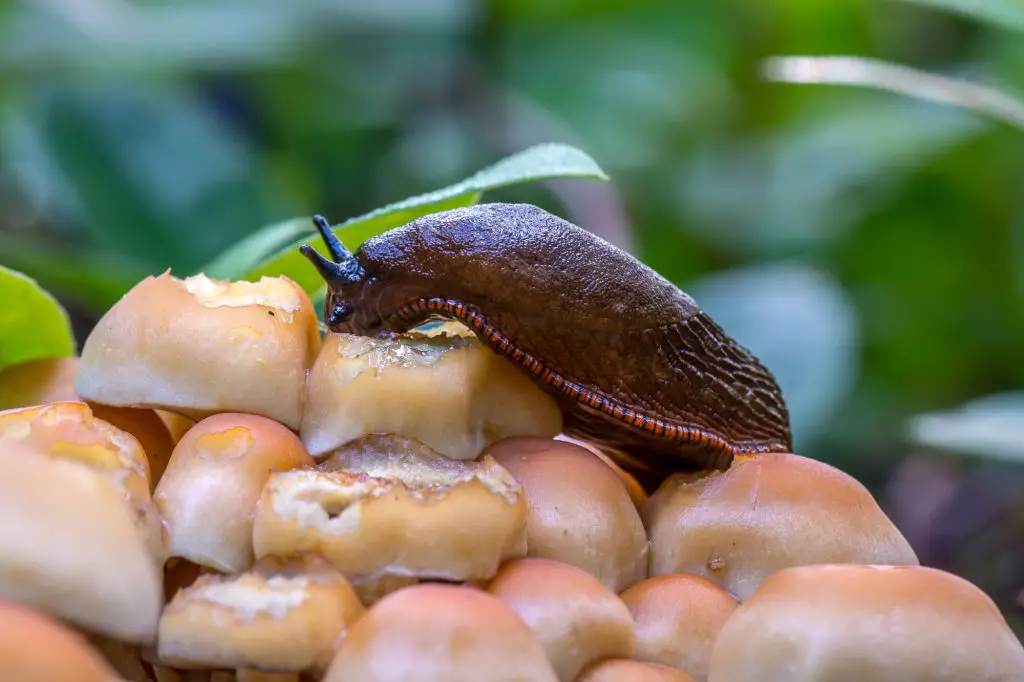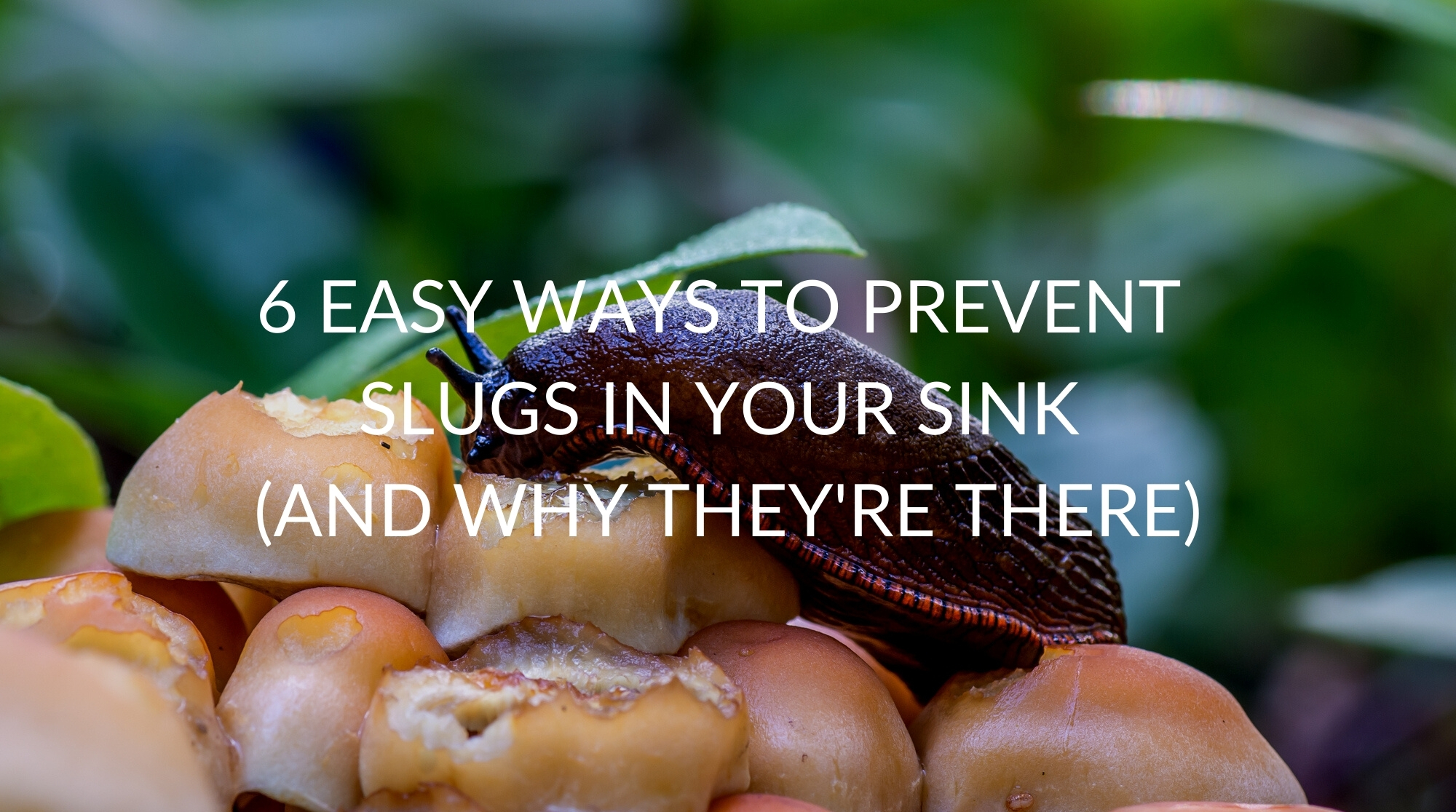Noticing a slug in your sink is the last thing you want when you’re about to prepare some food or start washing up.
However, it does happen, and it’s actually surprisingly common. In this article, you’ll find out why slugs can end up in your sink, how to get rid of them, and most importantly, the steps you can take to stop it from happening again.
So keep reading to find out everything you want to know!
Why Are There Slugs In Your Sink?
The main reason slugs may end up in your sink is because you’ve made your sink extremely inviting to them.
Slugs love warmth, moisture, and shade.
Your sink will provide all three, and when combined with any food remnants that are left behind for a slug to eat, you can begin to understand why a sink is so appealing to them.
How To Remove Slugs From Your Sink
1. Remove Them By Hand
If you aren’t faint-hearted, the easiest way to get rid of slugs in your sink is to simply remove them by hand. If you’re not up for that, you can also use utensils such as a cup or some paper. It’s incredibly easy and won’t take a second.
All you have to decide is whether you want to kill the slug or release him back into the wild.
2. Add A Slug Trap
If you don’t need to use your sink urgently, you can add a slug trap to it to catch any slugs inside.
To do this, just get a shallow bowl and fill it about 1″ in height with beer or a sugary drink. This should help to attract any other slugs that are hiding around your sink as well. So you may end up catching more that you haven’t even seen yet.
3. Salt
Salt is the age-old method of removing slugs from your home. However, it’s not the most humane way.
If you do plan on using salt, the trick is to trace slug trails back to their source, which will normally be a hole or crevice somewhere. Once you’ve done this, simply pour the salt into the crevice, and the slug will be no more.

How Do You Prevent Slugs From Entering Your Sink?
Fortunately, there are a lot of different ways you can prevent slugs from entering your sink. Here are the main things you should do!
1. Copper Tape
Copper tape is a great deterrent for slugs, and while it’s normally used for gardens, it can definitely be used in the home. The copper tape just needs to be placed down as a barrier around your sink, and the slugs will hate it. Because once they touch it, they’ll be given a shock that will deter them from going near it again.
Recommended:
No products found.
2. Use a Drain Cover
Putting in a drain cover or plug when you’re not using the sink is a great way to keep those slugs from taking the drainpipe express into your sink. Be sure it’s a snug fit to effectively block their entry.
- Measure Your Drain: This is key. Grab a tape measure and note the diameter of your drain. You want a cover that fits snugly without being too tight or too loose. A poorly fitting cover is about as useful as a screen door on a submarine.
- Material Matters: You’ve got options like plastic, metal, or silicone. Each has its pros and cons:
- Plastic: Affordable and lightweight, but not as durable as metal.
- Metal: Sturdy and long-lasting, but can rust over time unless it’s stainless steel.
- Silicone: Flexible and easy to clean, and it creates a good seal. It’s like the yoga instructor of drain covers – adaptable and reliable.
- Hole Size and Pattern: Look for a cover with holes small enough to prevent slugs and debris from passing through, but not so small that water doesn’t drain efficiently. It’s a balancing act – you want a good bouncer that lets the good stuff through and keeps the bad stuff out.
- Ease of Cleaning: Choose a cover that’s easy to clean. If it’s a hassle, you’ll avoid doing it, and then it’s like having a dirty welcome mat. Not very welcoming!
- Additional Features: Some drain covers come with extras like suction cups for a firmer grip, or handles for easy removal. Think of these like the cherry on top – nice to have, but not essential.
Recommended: Here are some great drain covers that fit about every size sink and drain.
No products found.
3. Use Expanding Foam To Fill Holes
If any holes or cracks go from the outside of your house to the inside, you should use expanding foam to fill them up.
This way, you’re going to make it impossible for slugs to get in. And not only will it be impossible for them to get in if there are any slugs in the gaps when you do it, but you also won’t have to worry about them anymore.
Recommended: Look for a polymer foam like this that bonds to most building materials like wood, brick, stone, metal, concrete, etc.
No products found.
4. Use Diatomaceous Earth
Think of diatomaceous earth (DE) as a bed of microscopic razor blades.
It might feel like flour to us, but to slugs, it’s like walking over sharp glass.
When they crawl over it, it damages their slimy, protective coating and causes them to dehydrate. It’s effective, but also a bit like a tiny obstacle course of doom for them.
- Get the Right Kind: Ensure you’re using food-grade diatomaceous earth. It’s safe for use around the home and garden.
- Dry Application: Simply sprinkle a thin layer of DE around the base of plants, near the sink, or any areas where you’ve noticed slug activity. You don’t need a lot; a light dusting will do the trick.
- Barrier Method: Create a perimeter around the areas you want to protect. Slugs won’t cross this line of DE – it’s like drawing a line in the sand, but with more punch.
- Reapply After Rain: DE loses its effectiveness when wet, so if it rains or you water your garden, you’ll need to reapply it.
- Safety First: While food-grade DE is non-toxic, it’s still a fine powder, so try not to inhale it when you’re applying it. Wearing a mask and gloves is a good idea.
- Indoor Use: If you’re using it indoors, like around your sink, apply it where you suspect the slugs are entering. Just remember to keep it dry.
- Be Patient: DE isn’t an instant slug killer. It takes time for it to work, so be patient. You’ll start to see a decrease in slug activity over a few days.
- Eco-Friendly: The best part about DE is that it’s environmentally friendly. It won’t harm the earthworms or beneficial insects in your garden, nor will it pose a risk to pets or children.
Recommended: Diatomaceous Earth 2 Lbs Food Grade DE – Includes Free Scoop
No products found.
5. Use a Non-Toxic Slug & Snail Spray
Commercial slug repellents are a convenient option for those who prefer ready-made solutions.
Look for those formulated with natural ingredients that are designed to repel slugs without harming them or the environment.
Here are a few points to consider when using such repellents:
- Natural Ingredients: Some commercial repellents boast natural ingredients like essential oils, which are unappealing to slugs. This makes them a safer choice around pets and children.
- Ease of Use: These products often come in easy-to-apply forms, such as sprays or granules, making them user-friendly and time-efficient.
- Long-Lasting Protection: They usually offer prolonged protection against slugs, reducing the need for frequent reapplication.
- Indoor and Outdoor Use: Some repellents are versatile enough to be used both indoors (like near sinks) and outdoors (in gardens or on patios).
- Effectiveness: While effective, remember that environmental factors like rain can impact their performance, so you might need to reapply after heavy rainfall.
- Check Reviews and Instructions: Since I can’t access the specific product details, it’s a good idea to read through user reviews and the manufacturer’s instructions to understand its effectiveness and the best way to apply it.
Recommended : Exterminators Choice Non-Toxic Slug and Snail Spray Safe Around Kids Pets
No products found.
6. Use Slug Repelling Plants
Rosemary, geraniums, lavender, and euphorbias are all plants you can add to your kitchen whose smells are going to repel slugs.
Just putting a few of them close to the kitchen sink should be enough to make slugs avoid returning to it.
No products found.
No products found.
No products found.
No products found.
Check For Leaks & Clean Your Kitchen
It goes without saying, but if there are slugs in your kitchen, that means it’s a good time to give it a solid clean.
Make sure you get into any crevice you think slugs could be hiding, and check the kitchen for mold and fungus as well (which slugs love to eat).
While you’re cleaning your kitchen, you should also be checking for leaks. Slugs like cool, moist areas, and if there’s a leak in your kitchen, it could be creating the perfect habitat for slugs.
Check for any places your dishwasher may be leaking, and then get it fixed as soon as possible.
Frequently Asked Questions
If you’ve noticed slugs in your kitchen sink, then you may be interested in some of these frequently asked questions.
Can Slugs Live In Your Plumbing System?
The chances of a slug living in your plumbing system are highly unlikely. Drains are equipped with a ‘trap’ that holds water to stop odors from entering your kitchen. This would make it extremely hard for a slug to survive without drowning.
On top of this, every time you use water in your sink, it flushes the trap adding freshwater, so the slug would probably be flushed down.
And lastly, all the chemicals such as dishwashing soap you use will be extremely harmful to slugs and their mucus secretions, which would also make it difficult for them to survive.
Do Slugs Come Up The Drain?
Again, while it’s highly unlikely, it’s not impossible for a slug to come up your drain. If there’s a crack or hole in a pipe where a slug can get to, then they may be able to climb up from there. If you think this is the case, you should definitely get a structural engineer out to survey any damage and fix the issue.
Recap
Now you know all the different ways you can prevent a slug from living in your sink, and most importantly, how to remove them.
Fortunately, prevention and removal are incredibly easy, so you shouldn’t have to worry too much about the issue unless it becomes a recurring problem.
If you liked this article, make sure you check out the rest of the website; otherwise, have a great day!

